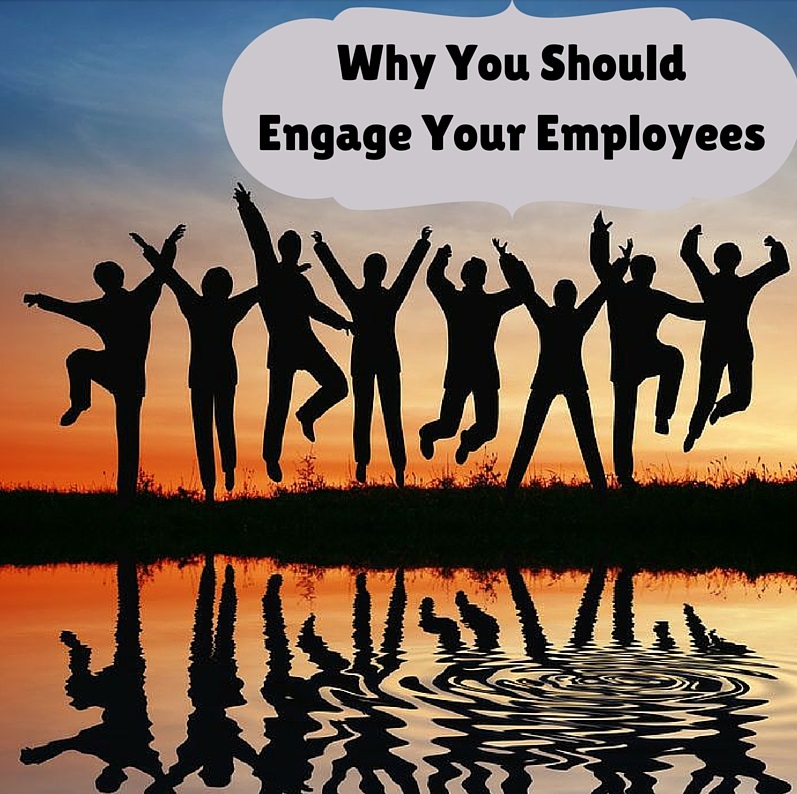- You are here:
- Home »
- Blog »
- Business »
- Why You Should Engage Your Employees
Why You Should Engage Your Employees
 Make and save money by reducing employee turnover. How do you do that? Increase employee engagement.
Make and save money by reducing employee turnover. How do you do that? Increase employee engagement.
My job is helping entrepreneurs create strong business plans, work smart, and use tech efficiencies to market in a way that makes them money. It is no secret that my goal is to make my clients millionaires.
So why talk about employee engagement? That’s just a human resources issue, right? On the contrary, as a small business owner, employee engagement should be near the top of your list of priorities.
An engaged, satisfied workforce creates profit for you, and reduces budget spend from employee churn. The hiring and training process takes time and money out of your pocket, while a valued employee is an asset.
An engaged workforce helps your bottom line
Engagement is the measure of commitment and satisfaction your employee feels for your small business. The smaller your business, and fewer your employees, the more essential it is that the people you hire want to grow your business with you.
We have all known co-workers, and maybe employees, who hate their jobs, scraping by with minimum effort to collect the paycheck. These types of characters bring others down, and can impact your revenue. Let’s look at four engagement profiles developed by Quantum Workplace:
- Engaged employee: Engaged employees are those who buy into your company culture, purpose, and goals. Committed to their job—and moving the organization forward—they support business and workplace community efforts. These workers are happy where they are, striving to do their best, and usually become assets to your business.
- Contributing: Doing what they need to do, contributing employees support your business, but do not fully embrace your value proposition. Contributing workers are doing a good job—but could do, and add, more if they were better engaged.
- Disengaged: Workers who are disengaged may already be looking for a different job. If highly skilled talent in your company is disengaged, your company is at risk for losing the talent, and restarting the recruitment and training cycle. Disengaged employees can still be met, and engaged, if the situation is noticed, and remedied in time.
- Hostile: Hostile workers have an attitude about your company and do not mind sharing it. Reducing your profit, and damaging your company culture, these are workers who have a mostly negative impact as soon as they walk in the door in the morning.
Are your employees engaged?
You might employ only hourly or salaried workers, or a mix of both. Although compensation and time spent on the job may be different, the aim is the same—engagement.
Companies that make employee engagement a high priority build a stronger workforce, improve client and customer service, enjoy better communication, and see better productivity. All these measures are the result of top-down efforts by owners to maximize their profit by valuing their employees.
Whether yours is a large or small shop, consider these tips to create a workforce better aligned with the overall goals and success of your company:
- Know your employees: While you work daily with some of your employees—would they say they know you? Do your employees, even if they are hourly, feel their contribution is important to the business, and to their own well-being? Being known, and valued, is a critical aspect of employee engagement.
- Do you have a company culture? It does not take a 100-member firm to create and enjoy a company culture. Start with fair compensation, easily accessible information, and approachable management staff. Add training and skills development. A company that cares about its employees enjoys better retention rates of talent up and down the line.
- What about flexibility? Do you understand and respond appropriately when a worker needs extra time, or a more flexible schedule? Limit and avoid “just-in-time” scheduling if you value your workforce and seek to reduce workforce churn.
- Communication: Do you maintain connection with employees through email, surveys, feedback, and informal newsletters? Good communication keeps workers knowledgeable about their workplace, and their own space in it. Increase employee engagement—and confidence—by keeping workers in the loop of important information.
While the last five years has seen many small businesses struggle to survive, more companies are now investing in growth. One of the best ways to assure growth is to ensure engagement of valuable personnel.
Profitable companies are no mistake. When you need a hand with improving your bottom line, call me at 585-633-7563.
Yours in profit,
Bob Britton



